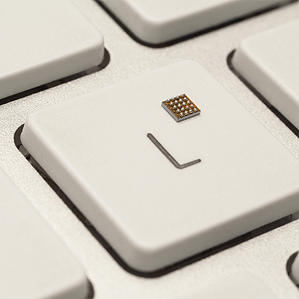Wanted for the Internet of Things: ant-sized computers
May 29, 2013

The tiny KL02 microcontroller, made by Freescale, was created to enable swallowable wireless computers, and contains an energy efficient processor, memory, and RAM (credit: Freescale)
A computer two millimeters square that contains almost all the components of a tiny functioning computer is the start of an effort to make chips that can put computer power just about anywhere for the vaunted “Internet of Things,” MIT Technology Review reports.
The KL02 chip, made by Freescale, is shorter on each side than most ants are long and crams in memory, RAM, a processor, and more. The genesis of the chip was a customer asking for help creating a wireless device small enough to be easily swallowed and cheap enough to be considered “digestible.”
Freescale is now offering the chip for general sale, and also embarking on an R&D push to create more tiny computers that also include sensors and wireless data connections.
Freescale will start offering the KL02 along with some slightly larger microcontrollers, all with Wi-Fi integrated, later this year, and has plans to stack components such as antennas and radio circuits into chips.
Smart dust
“Such wafer-scale packaging is getting close to ‘smart dust’ design points,” says Prabal Dutta, an assistant professor at the University of Michigan, referring to the idea that very cheap, tiny sensors could eventually be scattered like dust to gather data.
Freescale is also working on developing energy harvesting components — of heat, radio waves, or light — that could power very small devices.